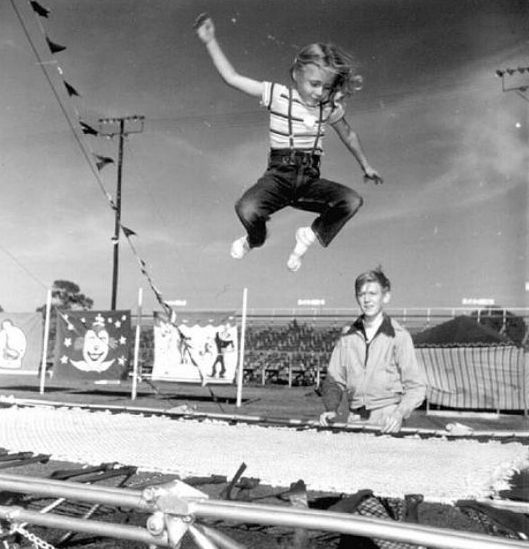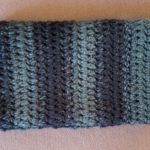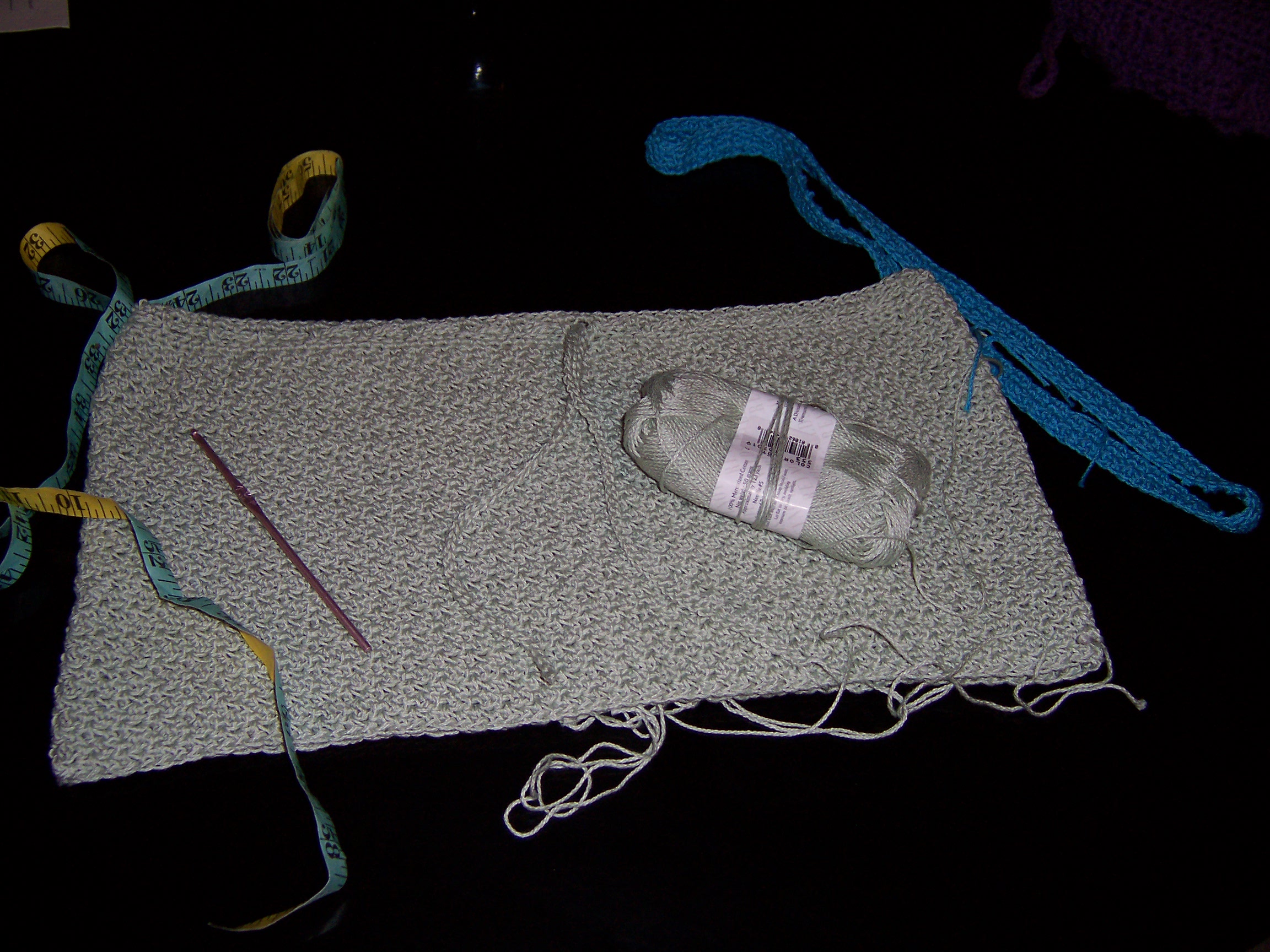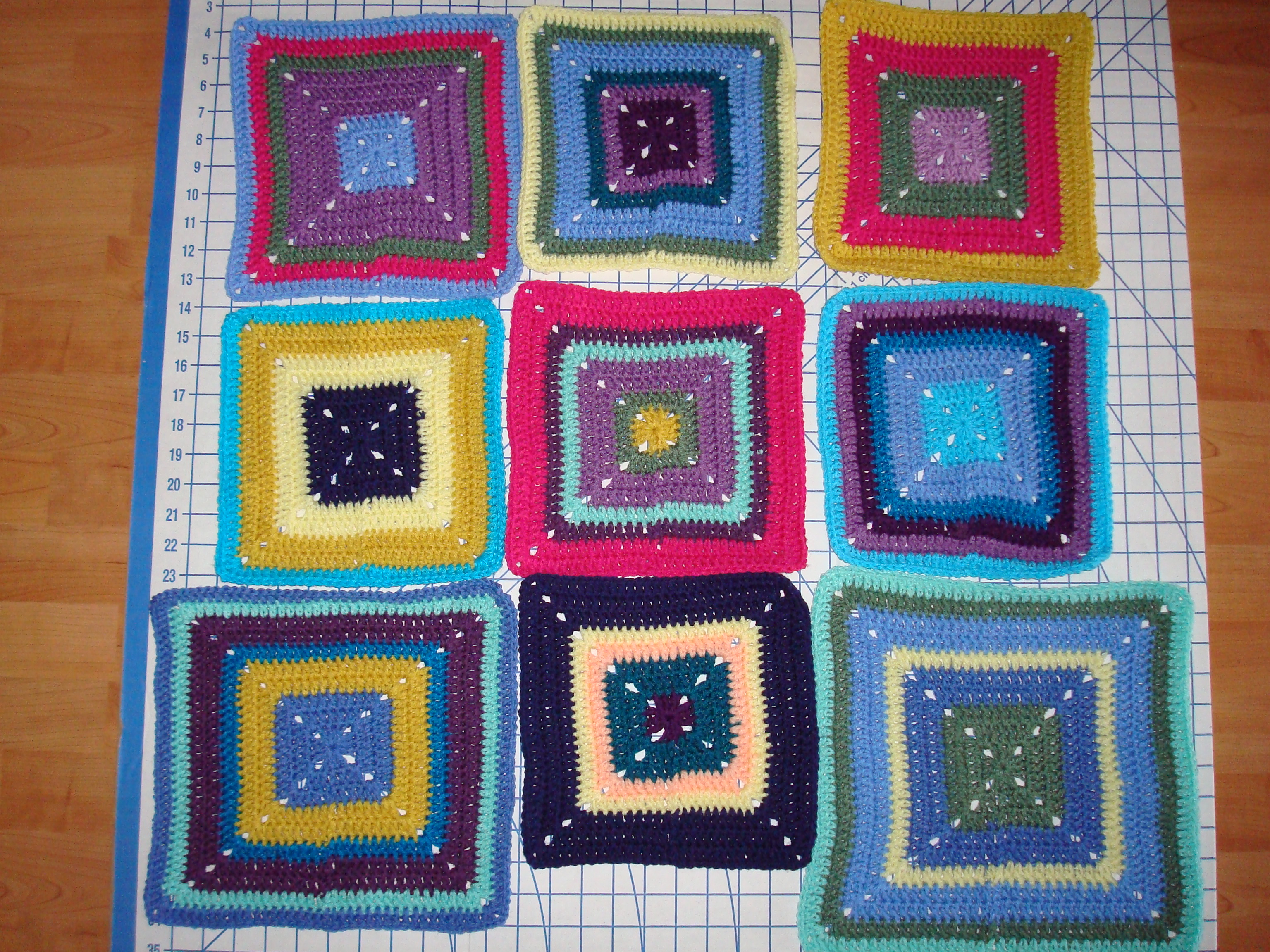This article contains affiliate links. Read my Disclosure Policy for details. Thanks for your support.
Like many fiber arts, crocheting is a sedentary endeavor. We sit sometimes for hours at a time, indulging in our love affair with hook and yarn.
But sitting for long periods of time can lead to health consequences like weight gain, diabetes, and dementia to name a few, that we probably want to avoid. We need regular amounts of physical activity every day to stay healthy. I’ve found what I believe to be one of the best ways to get the physical activity we crocheters need, and it only takes 10 minutes a day — rebound exercise.
What is Rebound Exercise?

Rebound exercise consists of jumping up and down or bouncing on a small or mini trampoline in order to achieve optimal health. It may not appear so at first glance, but rebounding works out the entire body since the entire body is moving with each bounce.
Not only is the entire body engaged in rebound exercise, all of the cells of the body are exercised. This means that all of the body’s systems – circulatory, digestive, endocrine, immune, lymphatic, muscular, nervous, reproductive, respiratory, skeletal, and urinary – are getting an excellent workout when you engage in rebound exercise.
How I Discovered Rebound Exercise

Back in 2000, I attended a Natural Health Expo at the Baltimore, MD Convention Center. Among the vendors present was a young man, Dave Hall, who was jumping on what looked like a little, round trampoline. My curiosity getting the better of me, I wandered over and began talking to him about what he called “rebounding” or rebound exercise.
I was extremely impressed by how lean this guy was, as well as his incredible muscle definition. He assured me that the only exercise he did was jump on his mini trampoline 10 minutes every day. What really impressed me was actually seeing the blood in an arm vein moving up and down as he bounced.
After attending a lecture on rebounding he gave later in the day, I was sold and purchased his Cellerciser® mini trampoline on the spot, thinking I could surely bounce for 10 minutes a day.
Unfortunately, I wasn’t very consistent with my rebound exercise routine during the first seven years of ownership. But when I moved to Hawaii, I had a lot more space and could keep it set up on the floor. This encouraged me to start rebounding every day, and I’ve been doing so on a fairly regular basis ever since.
I’ve owned two over the past 18 years,. The first one I had for eight years before I retired it and purchased a new one which I still have and use today.
I am convinced that rebounding has made all of my body’s systems, especially my bones, a lot stronger than they would have been without it. During the summer of 2017, I experienced a bad fall. And while I sprained my foot, I suffered no broken bones. I was 67 at the time, and the doctor who treated me was surprised that I hadn’t broken anything.
Why is Rebounding So Effective?
In traditional exercise workouts, be it jogging, lifting weights, swimming, calisthenics, or cycling, only one force is at work to strengthen the body – gravity. A good example is when a weight lifter hoists a weight above her head. It takes strength to resist the pull of gravity to lift the weight.
Rebounding adds two additional forces to strengthen the body – acceleration and deceleration.
Here’s what happens when you bounce on a rebounder. At the bottom of the bounce, you actually weigh twice as much as you do when your body is at rest because gravity and deceleration are operating at the same time. Then, the springs of the rebounder contract to accelerate your body up into the air. At the top of the bounce, you are weightless.
Albert Carter states in Rebound Exercise: The Ultimate Exercise for the New Millenium that, according to Einstein, the body can’t tell the difference between gravity, acceleration, and deceleration. When acceleration and deceleration are combined with gravity, a greater G force or gravitational pull is exerted on the body, which means your body has to worker harder to oppose it. As a result, a 10-minute workout on the rebounder equals 20 minutes of traditional exercise.
Carter goes on to say that even if you bounce without your feet leaving the surface of the rebounder, the G force would increase an extra 25%. Not only are your muscles getting stronger, every cell in your body is adjusting to this greater G force and becoming stronger as well.
In fact, according to Dave Hall, you don’t even need to jump high. Your feet only need to leave the surface of the rebounder from one to three inches in order for rebounding to be effective.
To get the optimal benefit from acceleration, deceleration and gravity, you need a rebounder that has a “deep bounce.” This is achieved with “triple-tiered springs” that attach the surface of the rebounder to the frame. Regular tube springs can lead to injuries which is why Dave Hall’s Cellerciser® mini trampoline is one of the safest rebounders on the market.
What are Some Benefits of Rebound Exercise?
In addition to strengthening every cell in the body, rebounding helps to flush the body of toxins that have accumulated in the blood, but also in the lymphatic system which has no way of removing toxins other than through exercise. Lymph fluid is the medium which surrounds the cells, delivering nutrients to and removing toxins from the cells. If this fluid isn’t circulating the way it should, it stagnates.
And because the lymphatic system constitutes part of the body’s immune system, when it isn’t functioning properly, illness results. Rebound exercise is one of the most effective means of keeping this lymphatic fluid circulating efficiently.
Increasing oxygen intake through cardiovascular or aerobic exercise is also necessary to maintain a healthy heart and circulatory system. Rebound exercise offers a safe and effective aerobic workout, without the risk of knee and ankle injuries associated with jogging on a hard surf ace.
Rebound exercise also –
- Increases flexibility and endurance
- Lowers “bad” cholesterol
- Increases metabolism and burns calories
- Reduces nervous tension and stress
- Improves balance and coordination
- Improves vision and helps reduce the occurrence of cataracts
- Alleviates joint pain by increasing fluid to the joints
- Reduces the risk of osteoporosis by strengthening bones
- Improves bladder control
- Reduces cellulite.
Remember, rebounding strengthens the body at the cellular level, so it’s no surprise that it has this wide range of benefits.
What Kinds of Exercise Can You Do On a Mini-Trampoline?
Rebound exercise can be engaged in by people of all ages. Even if you are older or infirm in some way, you can sit on the surface of the rebounder and have someone bounce behind you. And as I said earlier, you don’t have to jump high to benefit from rebounding. In fact, your feet don’t even have to leave the surface. Called “the health bounce,” this exercise involves moving up and down while your feet remain on the surface of the trampoline.
Or you can engage in more vigorous rebound exercises, including:
- Marching in place
- Jogging
- Jumping jacks
- Jumping up and down and side to side
- Dancing
- Twisting
- Jumping double-dutch style
- Kick bouncing.
So, my fellow crohceters, no more excuses! Put down your hook and yarn every hour or so and start rebounding. It’s easy to create a rebound routine that matches your lifestyle and fitness level. But be sure to consult with your health care provider before starting any exercise program.





